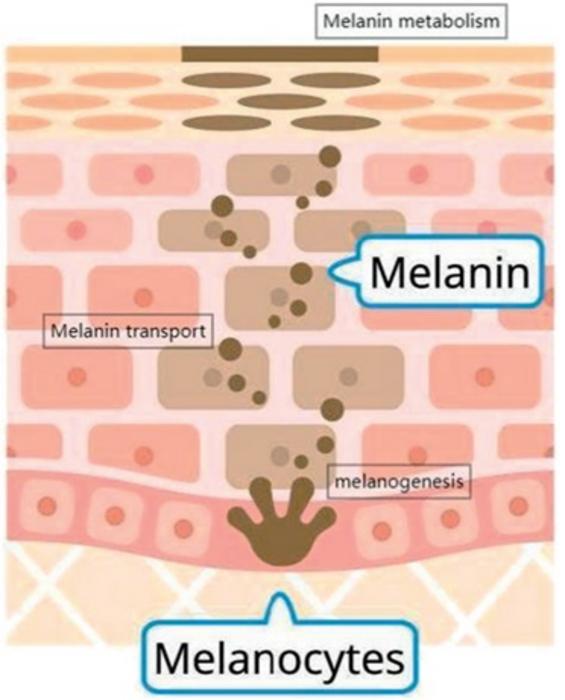Main causes of skin pigmentation in the body and the corresponding solutions
Published 30 August, 2024
Human skin color is primarily determined by the pigment melanin, which includes eumelanin and pheomelanin. The amount, distribution and type of melanin also affect hair and eye color. Factors such as melanocyte quantity, dendrite structure, enzymatic activity and melanosome transfer play a role in skin color variation. Understanding melanin production and metabolism is crucial for comprehending skin pigmentation. Moreover, due to the thicker stratum corneum and slower turnover rate of skin, particularly compared to facial skin, strategies that promote exfoliation and improve skin metabolism are essential for effective skin whitening treatments.
In a review published in the Volume 1, Issue 2 in Journal of Dermatologic Science and Cosmetic Technology, a team of researchers from Shandong Huawutang Biotechnology Co. in Jinan, China, the concept of melanin, causes of its formation and precautions for the repair of pigmentation are discussed.
“We found that although the mechanisms of melanin production and transport are similar between body and facial skin, the slower keratin metabolism in body skin can lead to dullness and pigmentation,” shares Fengwei Qi, senior and corresponding author of the study. “This makes sun protection crucial for body areas not regularly exposed to light, requiring more robust measures than those used for the face.
In particular, high water content enhances skin gloss, making it appear brighter, but friction can damage keratin-forming cells, weaken the skin barrier and increase water loss. Body areas like heels and elbows, which frequently come into contact with external objects, experience thickening of the stratum corneum, impaired skin barrier function, and melanin accumulation, leading to a dull complexion.
“Since metabolic processes in the body’s stratum corneum are slower than in facial skin, techniques like exfoliation and inducing cell autophagy could help expedite melanin metabolism, though further research is needed to understand their effects,” adds Qi. “For those interested in the topic of skin whitening, this study provides scientific insights to guide effective treatment and repair.


Contact author name, affiliation, email address:
Fengwei Qi,Shandong Huawutang Biotechnology Co., Ltd, Jinan 250101, Shandong, China,2522121986@qq.com
Funder:
This research received no funding.
Conflict of interest:
The authors declare the following financial interests/personal relationships which may be considered as potential competing interests: Authors are currently employed by Shandong Huawutang Biotechnology Co., Ltd. Yexiang Zhang is an Editorial Board Member for Journal of Dermatologic Science and Cosmetic Technology and was not involved in the editorial review or the decision to publish this article.
See the article:
https://www.sciencedirect.com/science/article/pii/S2950306X24000189#sec0010